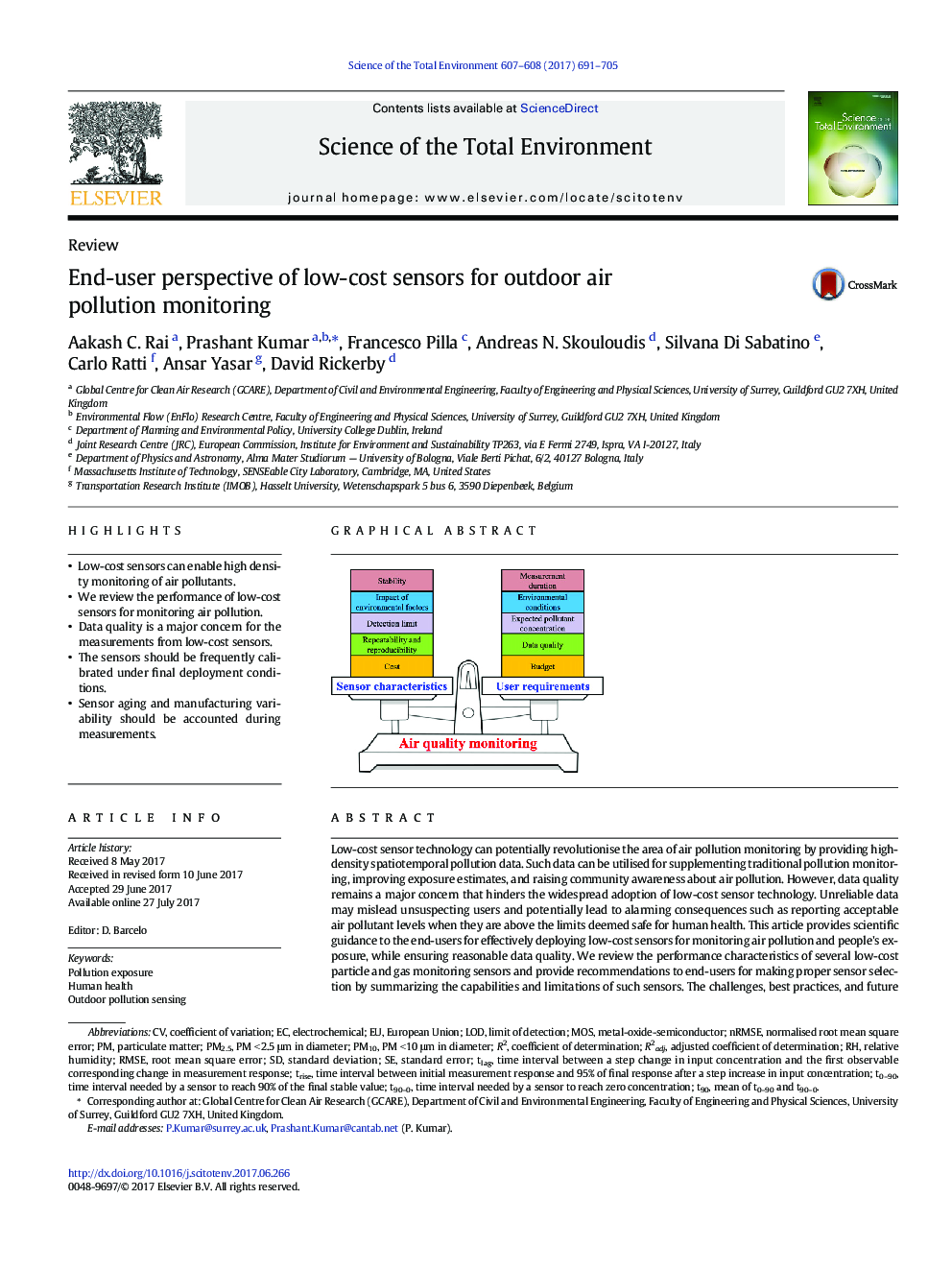| کد مقاله | کد نشریه | سال انتشار | مقاله انگلیسی | نسخه تمام متن |
|---|---|---|---|---|
| 5750026 | 1619694 | 2017 | 15 صفحه PDF | دانلود رایگان |

- Low-cost sensors can enable high density monitoring of air pollutants.
- We review the performance of low-cost sensors for monitoring air pollution.
- Data quality is a major concern for the measurements from low-cost sensors.
- The sensors should be frequently calibrated under final deployment conditions.
- Sensor aging and manufacturing variability should be accounted during measurements.
Low-cost sensor technology can potentially revolutionise the area of air pollution monitoring by providing high-density spatiotemporal pollution data. Such data can be utilised for supplementing traditional pollution monitoring, improving exposure estimates, and raising community awareness about air pollution. However, data quality remains a major concern that hinders the widespread adoption of low-cost sensor technology. Unreliable data may mislead unsuspecting users and potentially lead to alarming consequences such as reporting acceptable air pollutant levels when they are above the limits deemed safe for human health. This article provides scientific guidance to the end-users for effectively deploying low-cost sensors for monitoring air pollution and people's exposure, while ensuring reasonable data quality. We review the performance characteristics of several low-cost particle and gas monitoring sensors and provide recommendations to end-users for making proper sensor selection by summarizing the capabilities and limitations of such sensors. The challenges, best practices, and future outlook for effectively deploying low-cost sensors, and maintaining data quality are also discussed. For data quality assurance, a two-stage sensor calibration process is recommended, which includes laboratory calibration under controlled conditions by the manufacturer supplemented with routine calibration checks performed by the end-user under final deployment conditions. For large sensor networks where routine calibration checks are impractical, statistical techniques for data quality assurance should be utilised. Further advancements and adoption of sophisticated mathematical and statistical techniques for sensor calibration, fault detection, and data quality assurance can indeed help to realise the promised benefits of a low-cost air pollution sensor network.
183
Journal: Science of The Total Environment - Volumes 607â608, 31 December 2017, Pages 691-705